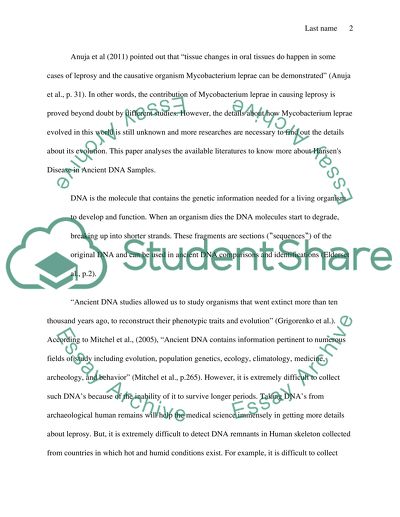Cite this document
(“Hansen's Disease in Ancient DNA Samples Essay Example | Topics and Well Written Essays - 1500 words”, n.d.)
Hansen's Disease in Ancient DNA Samples Essay Example | Topics and Well Written Essays - 1500 words. Retrieved from https://studentshare.org/anthropology/1447918-hansen-s-disease-in-ancient-dna-samples
Hansen's Disease in Ancient DNA Samples Essay Example | Topics and Well Written Essays - 1500 words. Retrieved from https://studentshare.org/anthropology/1447918-hansen-s-disease-in-ancient-dna-samples
(Hansen'S Disease in Ancient DNA Samples Essay Example | Topics and Well Written Essays - 1500 Words)
Hansen'S Disease in Ancient DNA Samples Essay Example | Topics and Well Written Essays - 1500 Words. https://studentshare.org/anthropology/1447918-hansen-s-disease-in-ancient-dna-samples.
Hansen'S Disease in Ancient DNA Samples Essay Example | Topics and Well Written Essays - 1500 Words. https://studentshare.org/anthropology/1447918-hansen-s-disease-in-ancient-dna-samples.
“Hansen'S Disease in Ancient DNA Samples Essay Example | Topics and Well Written Essays - 1500 Words”, n.d. https://studentshare.org/anthropology/1447918-hansen-s-disease-in-ancient-dna-samples.


